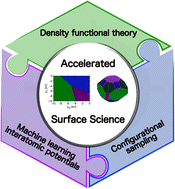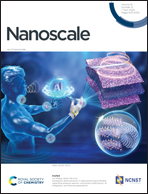Accelerating the prediction of inorganic surfaces with machine learning interatomic potentials
Abstract
The surface properties of solid-state materials often dictate their functionality, especially for applications where nanoscale effects become important. The relevant surface(s) and their properties are determined, in large part, by the material's synthesis or operating conditions. These conditions dictate thermodynamic driving forces and kinetic rates responsible for yielding the observed surface structure and morphology. Computational surface science methods have long been applied to connect thermochemical conditions to surface phase stability, particularly in the heterogeneous catalysis and thin film growth communities. This review provides a brief introduction to first-principles approaches to compute surface phase diagrams before introducing emerging data-driven approaches. The remainder of the review focuses on the application of machine learning, predominantly in the form of learned interatomic potentials, to study complex surfaces. As machine learning algorithms and large datasets on which to train them become more commonplace in materials science, computational methods are poised to become even more predictive and powerful for modeling the complexities of inorganic surfaces at the nanoscale.

- This article is part of the themed collections: 2024 Nanoscale HOT Article Collection, Recent Review Articles and Nanoscale 2024 Emerging Investigators


 Please wait while we load your content...
Please wait while we load your content...